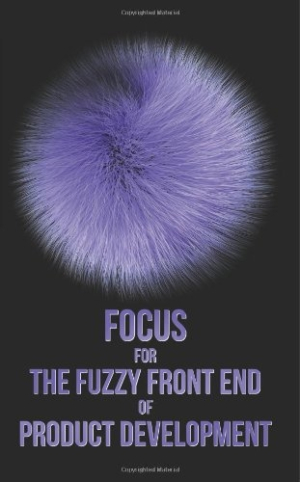Focus for The Fuzzy Front End of Product Development
The Idea Sheet Process
It’s not enough to have a great idea; Parker shows one way to test and implement it.
Eric Parker’s interesting book, Focus for the Fuzzy Front End of Product Development, presents a simple process for reducing front-end product-development time. Parker believes that companies creating innovative new products may invest extensive time and resources in the early stages of product development—before really knowing whether an idea will be successful. “If we develop something, no matter how good it is,” Parker writes, “if it is not what the customer will buy, it is a huge waste.” Parker describes a simple yet effective solution, which he calls the “idea sheet process.”
The book walks through the rationale, execution, and implementation of this idea. It involves mastering the discipline of distilling an idea onto a single sheet of paper, and then having that idea evaluated by staff and, most importantly, customers. Parker makes a key point about the customer review stage: “The best thing that the valued customer can tell us is no and why. This will save us opportunity cost. The second best answer is yes.”
A compelling example from Parker’s own career is offered to demonstrate why it is so important to not just get customer input early on, but to act on it. During his time at Delco Products, he witnessed a battle over station wagon rear gates. While Ford designed its rear gate based on customer desires, General Motors asked customers what they wanted and then made something else. He says that, as a result, Ford dominated the station wagon market for a decade. This story is evidence that encouraging customers to weigh in on ideas, and then giving them what they want, is crucial.
Parker does a nice job turning a conceptual discussion into a concrete implementation strategy by including a specific, if somewhat fanciful, idea sheet of his own. The author follows the process he describes in the book to develop an idea for a “commercial plastic bottle shredder,” complete with a fully executed idea sheet. This hypothetical execution helps illuminate both the idea sheet process and a potential outcome of utilizing it.
The volume would benefit from stronger organization. Very short chapters could be consolidated into longer chapters, aiding in the flow of content. Discussions of the idea sheet process seem unnecessarily repetitive, as though material that might be better presented in an article or pamphlet is being stretched out. At times, some of the writing is uneven, with sentences in need of clearer structure: “The idea sheet process is very much common sense. The organization will be encouraged to be creative; the management of common sense will be applied by the valued customer.”
Parker’s book does meet a need: it offers a methodology that could effectively save a company significant time early in the idea cycle. That in and of itself is reason enough for product development managers to consider the value of the idea sheet process.
Reviewed by
Barry Silverstein
Disclosure: This article is not an endorsement, but a review. The publisher of this book provided free copies of the book and paid a small fee to have their book reviewed by a professional reviewer. Foreword Reviews and Clarion Reviews make no guarantee that the publisher will receive a positive review. Foreword Magazine, Inc. is disclosing this in accordance with the Federal Trade Commission’s 16 CFR, Part 255.

